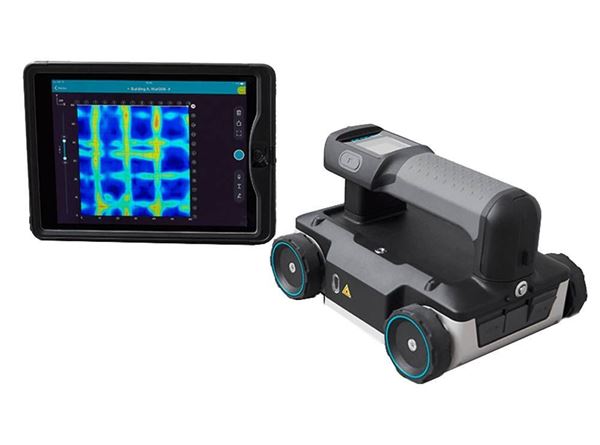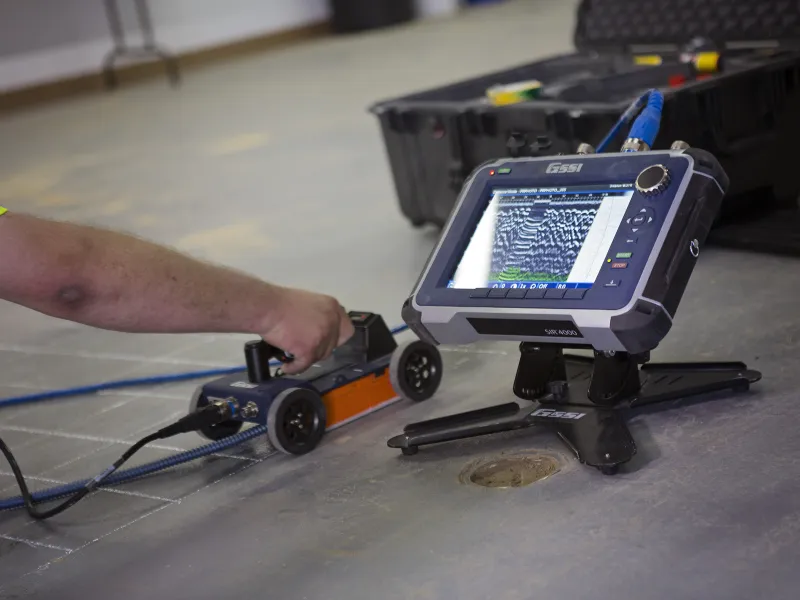RainierGPR Service Areas: Professional Concrete Scanning in Your Region
RainierGPR Service Areas: Professional Concrete Scanning in Your Region
Blog Article
Concrete Scanning: A Critical Action In The Direction Of Making Certain Architectural Stability and Security
In the realm of building and facilities maintenance, the significance of concrete scanning can not be overstated. This meticulous procedure holds the vital to introducing potential risks hidden beneath the surface area of relatively solid structures. By employing innovative modern technology and techniques, concrete scanning offers as an essential tool in ensuring that the honesty and safety of bridges and buildings are promoted to the highest possible requirements. However, past its surface-level effects, the function of concrete scanning prolongs far much deeper than satisfies the eye.
Importance of Concrete Scanning
Concrete scanning plays an essential role in making sure the structural honesty and safety and security of buildings and framework projects. By using innovative innovations such as ground-penetrating radar (GPR) and electro-magnetic induction, professionals can non-destructively evaluate concrete structures to find potential flaws, voids, ingrained things, and reinforcement design. This procedure allows very early detection of abnormalities that might compromise the security of a structure, avoiding pricey problems and making certain the security of residents.
Concrete scanning is especially important during the preparation and building phases of a job. Prior to boring, reducing, or coring into concrete, scanning helps identify the accurate places of rebar, post-tension cords, and various other ingrained elements, minimizing the threat of unintended hits that can lead to structural weaknesses. Additionally, concrete scanning aids in high quality control by validating the density of concrete covers and discovering any type of disparities that might affect the total durability of the structure. Ultimately, purchasing concrete scanning solutions is not just an aggressive measure to reduce risks but also a fundamental step towards maintaining the long-term safety and security and security of structures and facilities.
Innovation for Concrete Evaluation

Advantages of Early Discovery
Prompt detection of structural concerns can dramatically mitigate threats and make certain the longevity of construction jobs. By recognizing possible troubles at an early stage in the building procedure, stakeholders can take aggressive measures to address problems before they intensify into larger and much more expensive issues. Among the crucial advantages of very early discovery is the avoidance of structural failures, which can linked here position major security risks and cause job delays and monetary losses.
Furthermore, early detection enables timely repairs and maintenance, which can aid expand the life-span of the framework. By resolving concerns immediately, building teams can prevent expensive repair services or perhaps the demand for early replacement of structural parts. This aggressive strategy not just saves time and money but also boosts the total security and longevity of the building and construction task.
Furthermore, early detection can boost task planning and decision-making by providing stakeholders with important insights right into the problem of the structure. Equipped with this info, project supervisors can make educated choices pertaining to building and construction timelines, materials, and techniques, causing much more efficient and successful task outcomes.
Making Certain Structural Security
Guaranteeing the structural security of a building task is extremely important to its safety and longevity. Concrete scanning plays an important duty in making certain architectural stability by spotting prospective problems such as spaces, delamination, or support deterioration that can endanger the integrity of the structure over time.
By using sophisticated scanning modern technologies like ground-penetrating radar (GPR) and electromagnetic induction, building and construction professionals can non-invasively evaluate concrete frameworks to determine areas of issue below the surface area. This aggressive strategy enables the very early detection of weak points or issues, enabling punctual fixings or support to stop structural failures.
Regular concrete scanning throughout various building and construction stages and throughout the life process of a framework can aid maintain its security, reduce risks, and ensure the safety and security of passengers. By prioritizing architectural security through concrete scanning, construction tasks can improve their resilience and toughness, eventually adding to better security and longevity.

Avoiding Critical Failings
To protect versus devastating occasions, careful monitoring and positive maintenance are imperative in avoiding crucial failings within structural structures. Finding prospective concerns before they rise is essential to stop architectural failures. Applying routine examinations, such as concrete scanning, can expose hidden flaws like voids, splits, or rust that could endanger the stability of a framework. By utilizing innovative scanning technologies like Ground Passing through Radar (GPR) or Concrete X-ray, engineers can non-destructively analyze the condition of concrete and determine weak factors that call for reinforcement or repair service - RainierGPR Service Areas.

Final Thought
Finally, concrete scanning plays an important duty in guaranteeing architectural integrity and security by using advanced innovation for early detection of potential concerns. This proactive approach aids prevent crucial failures and ensures the stability of structures. It is important to prioritize concrete evaluation as a common method to secure official statement the long life these details and security of buildings and facilities.
Concrete scanning plays a critical duty in making certain the architectural honesty and safety and security of structures and facilities projects. In addition, concrete scanning help in high quality control by verifying the density of concrete covers and identifying any kind of inconsistencies that may influence the general sturdiness of the structure. Concrete scanning plays a crucial duty in making certain architectural stability by detecting potential concerns such as gaps, delamination, or reinforcement corrosion that can jeopardize the stability of the structure over time.

In final thought, concrete scanning plays an essential function in ensuring architectural integrity and safety by utilizing advanced modern technology for very early detection of prospective issues.
Report this page